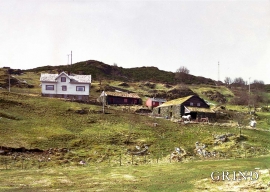- Remove Settlements, Villages, Towns filter Settlements, Villages, Towns
- Remove Maritime environments filter Maritime environments
- Remove Middle age filter Middle age
- Remove Farm sites filter Farm sites
- Remove Radøy, frå 2020 del av nye Alver kommune. filter Radøy, frå 2020 del av nye Alver kommune.
- Remove Voss, frå 2020 del av nye Voss herad. filter Voss, frå 2020 del av nye Voss herad.





Oppheim
In the slope above Oppheim church lies the old vicarage at OPPHEIM. If you stroll up the road from the church you will arrive in a farmyard marked by traces of building style and living traditions from the Middle Ages.

Ringheim
The farm Ringheim by Lundarvatnet is amongst the largest in Voss. It is divided into eight units and four cadastral numbers: Store Ringheim, Indre Ringheim, Nedre Ringheim and Vetle Ringheim. The farm Lund, from which Lundarvatnet takes its name, must have been a part of Ringheim, and the farms Gjerde and Tròdo (Trå) must formerly have been separated from Ringheim. The name Ringheim indicates that it stems from early times.


Finne
Peter Bonde, who owned Finne towards the end of the 1200s, had a jumping stag in his family emblem. This stag is the origin for the heraldic blazon of Voss. Peter Bonde and his descendants acquired possession of many farms and farm parts; the so-called Finne properties became some of the largest land properties in the country.

Øvre Tveiten
On an east-facing slope above Halllandsvatnet lies the farm hamlet of Øvre Tveiten, two kilometres north of Manger. The stone hayshed lies with its gable out into the sloping terrain, and the old dwelling house, a little long house, has solid stone walls on three sides. But inside the walls the hayshed and the living rooms are wooden buildings.

Boga
In the lightly undulating landscape at Boga there lies an old house with several rooms on a small rise. In fact it looks like three houses built into one another; a scullery, a living room and a store with a loft. From other sources we know that this house had covered passageways and sheds round all the walls in the 19th century; a compressed “long house” with inter-connections between all the rooms. This is a building style from the Middle Ages that we see traces of; a building corresponding to those we have seen remains of at Høybøen in Fjell and Lurekalven in Lindås. Bogatunet was restored in 2006.


